 Search by Keyword
|
"TELL ME WHY"
(John Lennon - Paul McCartney)
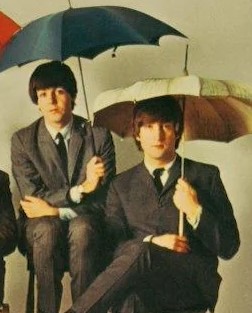 One reason given for the outstanding durability of The Beatles' career has been thought by many to be the positive message they continued to portray in their songs. The innocence and fun of their lyrics, especially in 1964, was undoubtedly the catalyst to their irresistible charm. "Can't Buy Me Love," "I Saw Her Standing There" and "She Loves You" were just happy songs that made you feel good. One reason given for the outstanding durability of The Beatles' career has been thought by many to be the positive message they continued to portray in their songs. The innocence and fun of their lyrics, especially in 1964, was undoubtedly the catalyst to their irresistible charm. "Can't Buy Me Love," "I Saw Her Standing There" and "She Loves You" were just happy songs that made you feel good.
Many times, however, if you listened carefully, the message wasn't all that positive. On the surface, the song "Tell Me Why" comes across as an energetic rocker with all the ingredients of a feel good Beatles song. It will usually take a suggestion from someone that you listen carefully to the lyrics before you realize that the song actually depicts a man complaining to his significant other about the aggravation they are causing.
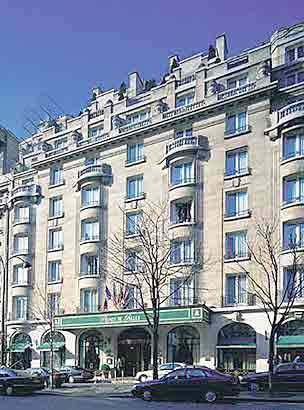
George V Hotel, Paris, France
Songwriting History
"'Tell Me Why'...They needed another upbeat song and I just knocked it off. It was like a black, girl-group New York song." This statement from John Lennon in 1980 isn't much to go on, but it does narrow down events to specify February 1964 as the time of writing.
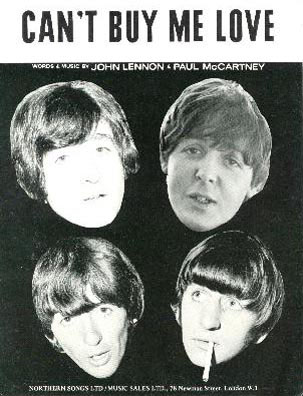 Knowing that they had to start composing songs for their upcoming movie, they had a piano brought in to the George V Hotel in Paris where the group was playing an extensive 18-day residency at the famous Olympia Theatre. During this January stay, the first batch of songs were written, including "Can't Buy Me Love," "You Can't Do That," "If I Fell," "And I Love Her" and "I'll Be Back." Also written during this stay was a song entitled "One And One Is Two," which was considered not good enough for use in the movie. It was instead given to fellow Liverpool group "The Strangers" to record. Knowing that they had to start composing songs for their upcoming movie, they had a piano brought in to the George V Hotel in Paris where the group was playing an extensive 18-day residency at the famous Olympia Theatre. During this January stay, the first batch of songs were written, including "Can't Buy Me Love," "You Can't Do That," "If I Fell," "And I Love Her" and "I'll Be Back." Also written during this stay was a song entitled "One And One Is Two," which was considered not good enough for use in the movie. It was instead given to fellow Liverpool group "The Strangers" to record.
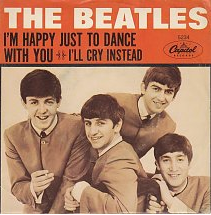 During their first American visit in February, they must have been informed by someone that they needed to compose more "upbeat" songs, so that's where the remaining songs used in the movie were written, namely "I'm Happy Just To Dance With You," "I Should Have Known Better" and "Tell Me Why." The title track of the film didn't get written until April when it was decided what the movie would be named, so the song "A Hard Day's Night" would be the exception here. During their first American visit in February, they must have been informed by someone that they needed to compose more "upbeat" songs, so that's where the remaining songs used in the movie were written, namely "I'm Happy Just To Dance With You," "I Should Have Known Better" and "Tell Me Why." The title track of the film didn't get written until April when it was decided what the movie would be named, so the song "A Hard Day's Night" would be the exception here.
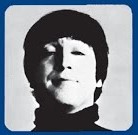 Saying that John "just knocked it off" referred to how Lennon and McCartney would many times create filler songs (sometimes referred to as "work songs" or "hack songs") that were just meant to fill a need, in this case, a slot in the movie. Since there is no record of the band ever performing the song live on stage, nor for radio or television, the group obviously had no other aspirations for the song Saying that John "just knocked it off" referred to how Lennon and McCartney would many times create filler songs (sometimes referred to as "work songs" or "hack songs") that were just meant to fill a need, in this case, a slot in the movie. Since there is no record of the band ever performing the song live on stage, nor for radio or television, the group obviously had no other aspirations for the song
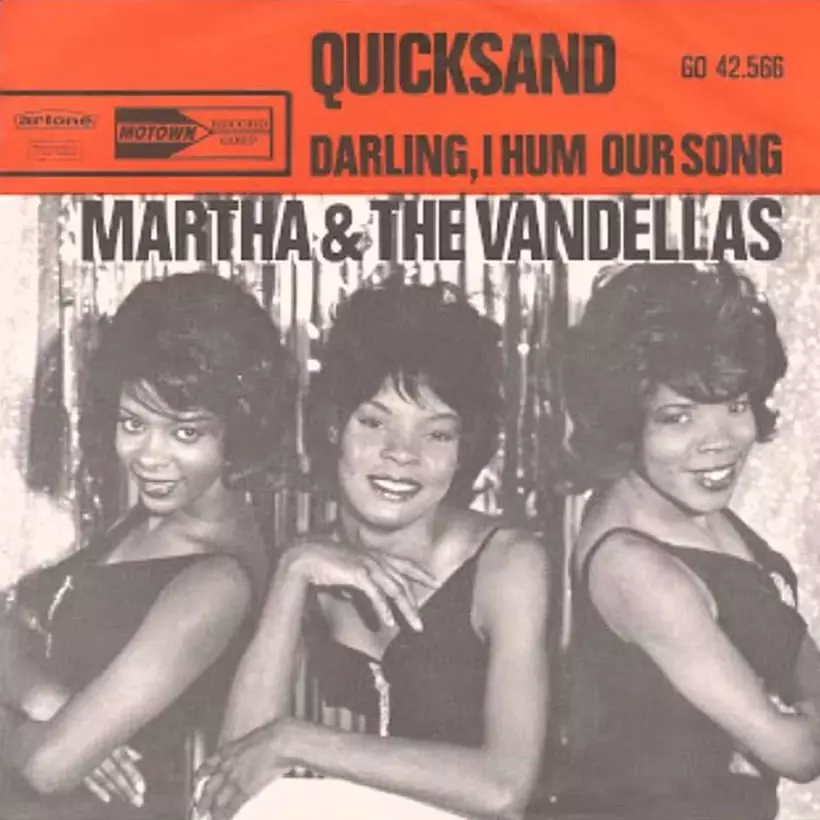 With regard to the song's inspiration, it's easy to hear the "black, girl-group" sound, as Lennon referred to it above, being displayed on this track. The irresistible swing beat can easily be traced back to songs such as "Chains" by The Cookies, as well as songs more recent for the time, some examples being "Heat Wave" and "Quicksand" by Martha & The Vandellas. With regard to the song's inspiration, it's easy to hear the "black, girl-group" sound, as Lennon referred to it above, being displayed on this track. The irresistible swing beat can easily be traced back to songs such as "Chains" by The Cookies, as well as songs more recent for the time, some examples being "Heat Wave" and "Quicksand" by Martha & The Vandellas.
One undisputed fact that is corroborated by both Lennon and McCartney is that "Tell Me Why" was entirely written by John.
Recording History
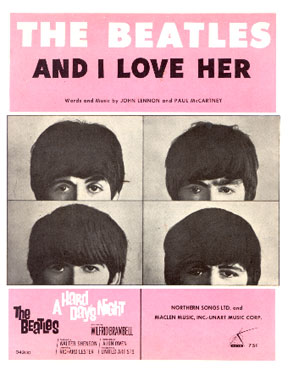 February 27th, 1964 was the third pre-scheduled day that The Beatles met in EMI Studio Two to record tracks for use in their first movie, which was to begin shooting three days later, or on March 2nd, 1964. The early recording session of the day, from 10 am to 1 pm, first had them finally complete work on Paul's "And I Love Her," which took them three days to nail down. With that finally out of the way, they started on John's new composition "Tell Me Why," which began at approximately 11:30 am. February 27th, 1964 was the third pre-scheduled day that The Beatles met in EMI Studio Two to record tracks for use in their first movie, which was to begin shooting three days later, or on March 2nd, 1964. The early recording session of the day, from 10 am to 1 pm, first had them finally complete work on Paul's "And I Love Her," which took them three days to nail down. With that finally out of the way, they started on John's new composition "Tell Me Why," which began at approximately 11:30 am.
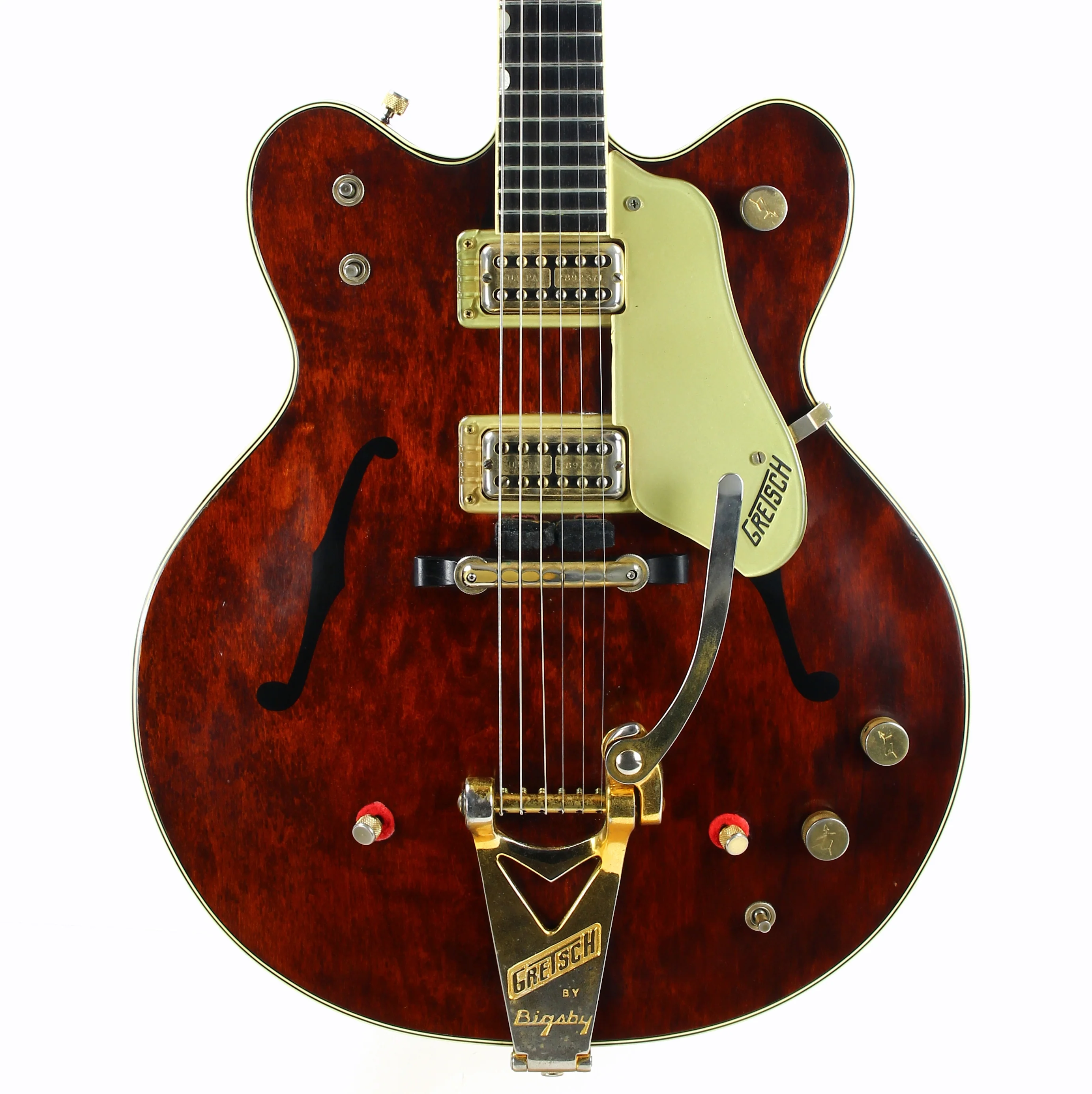 The Beatles ran through eight takes (not all complete) with all four Beatles playing their usual instruments as John, Paul and George sang three part harmonies throughout. There was a degree of frustration in getting all of their vocal parts arranged perfectly, which is caught on tape in-between "take three" and "take four." George demonstrated what his harmony vocal line should be to John while playing the individual guitar notes, claiming that what he was singing in the first three takes was "clashing" with John's lead vocal part. All the while, Ringo was practicing his intricate drum parts while Lennon instructed Harrison to "just do it on one note," something that John liked to incorporate throughout their career (witness "Help!" and "Lucy In The Sky With Diamonds" as prime examples). Lennon then asked, "What about this 'stop' bit or something," which prompted George Martin to ask, "Do you want to practice this 'stop' bit?' After Paul answers, "OK then, George," they stop taping in order to work out the 'Beatles break' that occurs after the bridge of the song. The Beatles ran through eight takes (not all complete) with all four Beatles playing their usual instruments as John, Paul and George sang three part harmonies throughout. There was a degree of frustration in getting all of their vocal parts arranged perfectly, which is caught on tape in-between "take three" and "take four." George demonstrated what his harmony vocal line should be to John while playing the individual guitar notes, claiming that what he was singing in the first three takes was "clashing" with John's lead vocal part. All the while, Ringo was practicing his intricate drum parts while Lennon instructed Harrison to "just do it on one note," something that John liked to incorporate throughout their career (witness "Help!" and "Lucy In The Sky With Diamonds" as prime examples). Lennon then asked, "What about this 'stop' bit or something," which prompted George Martin to ask, "Do you want to practice this 'stop' bit?' After Paul answers, "OK then, George," they stop taping in order to work out the 'Beatles break' that occurs after the bridge of the song.
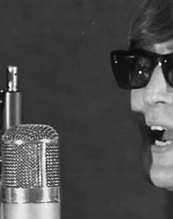 "Take four" was then counted off by Lennon, but this take disolved after the vocal harmonies and timing were off on their first "tell me why" harmonies. Paul exclaimed, "You made a mistake, I know you did," which prompted John to quickly count off "take five." While this take was complete, there were some problems. John's voice cracked in the third chorus, he chuckled at the end of the bridge (promping Paul to exclaim "Yeah" at that point), and Harrison flubbed his guitar outro at the end. As the take concluded, Lennon stated, "I shouldn't have stopped," Paul replying, "It was no use, y'know." "Take four" was then counted off by Lennon, but this take disolved after the vocal harmonies and timing were off on their first "tell me why" harmonies. Paul exclaimed, "You made a mistake, I know you did," which prompted John to quickly count off "take five." While this take was complete, there were some problems. John's voice cracked in the third chorus, he chuckled at the end of the bridge (promping Paul to exclaim "Yeah" at that point), and Harrison flubbed his guitar outro at the end. As the take concluded, Lennon stated, "I shouldn't have stopped," Paul replying, "It was no use, y'know."
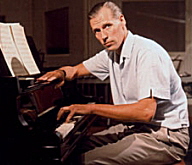 In the end, the initial track of "Tell Me Why" was recorded to everyone's approval by "take eight." Overdubs were then performed, Lennon's double-tracked lead vocal then being captured on the open fourth track of the four-track tape. However, the thickness of the three-part harmonies during most of the song appears to indicate that all three vocalists double-tracked their parts, not just John. A piano can be detected in the finished product so, since there is no piano heard in "take five" of the initial recording, this was undoubtedly overdubbed at this time as well, presumably by George Martin as was quite usual up to this point in the band's recording career. By 1 pm, the song was done and it was time for lunch. In the end, the initial track of "Tell Me Why" was recorded to everyone's approval by "take eight." Overdubs were then performed, Lennon's double-tracked lead vocal then being captured on the open fourth track of the four-track tape. However, the thickness of the three-part harmonies during most of the song appears to indicate that all three vocalists double-tracked their parts, not just John. A piano can be detected in the finished product so, since there is no piano heard in "take five" of the initial recording, this was undoubtedly overdubbed at this time as well, presumably by George Martin as was quite usual up to this point in the band's recording career. By 1 pm, the song was done and it was time for lunch.
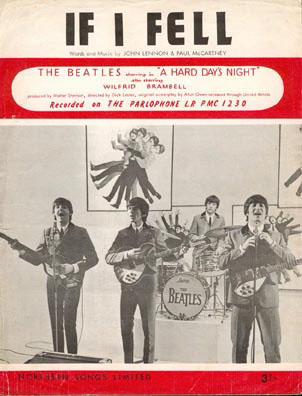 The afternoon session this day, from 2:30 to 5:30, was put aside to work on an earlier Lennon / McCartney collaboration "If I Fell," which they knew would need much TLC to get right. This may have been the catalyst to get "Tell Me Why" over with in the morning session, so as not to have to return to it later in the next session. The group was especially proud of "If I Fell," as can be seen by the inclusion of it in their set list during their first world tour later in the year. As for "Tell Me Why," however, it was not afforded the same luxury. The afternoon session this day, from 2:30 to 5:30, was put aside to work on an earlier Lennon / McCartney collaboration "If I Fell," which they knew would need much TLC to get right. This may have been the catalyst to get "Tell Me Why" over with in the morning session, so as not to have to return to it later in the next session. The group was especially proud of "If I Fell," as can be seen by the inclusion of it in their set list during their first world tour later in the year. As for "Tell Me Why," however, it was not afforded the same luxury.
The mono mix of the song was made on March 3rd, 1964 in the Studio One control room by producer George Martin and engineers Norman Smith and A.B. Lincoln. None of The Beatles were present, as they were busy filming the movie on this day.
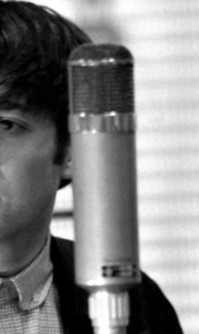 It's interesting to note that George Martin decided to use the track that contained John's double-tracked vocal sparingly on this mono mix. His intention was to leave the verses single-tracked to get a more intimate sound when John sang alone, while the refrains would be double-tracked to add a fuller dimension when the harmonies kicked in. Since this meant turning the fader for that track up and down manually during the mix, a couple of flaws can be heard. When the first verse begins, you can hear John sing the first three words "well I gave" double-tracked before George Martin realized he needed to turn the fader down. Also, throughout the bridge, they left the track up slightly so, if you listen carefully, you can hear John's vocal double-tracked in the distance. It's interesting to note that George Martin decided to use the track that contained John's double-tracked vocal sparingly on this mono mix. His intention was to leave the verses single-tracked to get a more intimate sound when John sang alone, while the refrains would be double-tracked to add a fuller dimension when the harmonies kicked in. Since this meant turning the fader for that track up and down manually during the mix, a couple of flaws can be heard. When the first verse begins, you can hear John sing the first three words "well I gave" double-tracked before George Martin realized he needed to turn the fader down. Also, throughout the bridge, they left the track up slightly so, if you listen carefully, you can hear John's vocal double-tracked in the distance.
 On June 9th, 1964, George Martin, Norman Smith and 2nd engineer Ken Scott convened in the control room of Studio Three to create mono tape copies of all of the songs to be used in the film "A Hard Day's Night," which included "Tell Me Why." There were now two copies of these mono mixes, one of which to be sent to United Artists Records (for use on their American soundtrack album) and the other to Capitol Records (for use on their American album "Something New"). On June 9th, 1964, George Martin, Norman Smith and 2nd engineer Ken Scott convened in the control room of Studio Three to create mono tape copies of all of the songs to be used in the film "A Hard Day's Night," which included "Tell Me Why." There were now two copies of these mono mixes, one of which to be sent to United Artists Records (for use on their American soundtrack album) and the other to Capitol Records (for use on their American album "Something New").
 At the last minute, as usual, stereo mixes were made of the entire "A Hard Day's Night" album. On June 22nd, 1964, George Martin, Norman Smith and 2nd engineer Geoff Emerick met in the control room of Studio One for a long tedious day of creating mono and stereo mixes for the album. "Tell Me Why" got its only stereo mix on this day. Since this stereo mix was done in such a hurry, they left the double-tracked vocal up for the entire song, leaving a noticeable difference between the mono and stereo mixes. The vocals appear sloppy wherever Lennon didn't get the phrasing exactly the same on his overdub as he did on take eight. For instance, in the second verse, Lennon sang "if you don't" when double-tracking but sang "and if you don't" on the original take eight, which sounds awkward and jumbled on the stereo mix. At the last minute, as usual, stereo mixes were made of the entire "A Hard Day's Night" album. On June 22nd, 1964, George Martin, Norman Smith and 2nd engineer Geoff Emerick met in the control room of Studio One for a long tedious day of creating mono and stereo mixes for the album. "Tell Me Why" got its only stereo mix on this day. Since this stereo mix was done in such a hurry, they left the double-tracked vocal up for the entire song, leaving a noticeable difference between the mono and stereo mixes. The vocals appear sloppy wherever Lennon didn't get the phrasing exactly the same on his overdub as he did on take eight. For instance, in the second verse, Lennon sang "if you don't" when double-tracking but sang "and if you don't" on the original take eight, which sounds awkward and jumbled on the stereo mix.
Sometime in 2025, producer Giles Martin, with engineers Joe Wyatt and Greg McAllister, created a composite mix of "take four" and "take five" of the original EMI sessions of "Tell Me Why" for inclusion on "Anthology 4," this being released in various editions in 2025 as detailed below.
Song Structure and Style
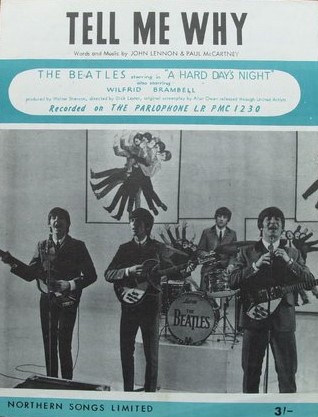 "Tell Me Why" follows a structure quite similar to what we've heard before in the Lennon / McCartney catalog ("It Won't Be Long" being an example) that incorporates and highlights the use of the refrain. The structure here consists of 'refrain/ verse/ refrain/ verse/ refrain/ bridge/ refrain', which would become ababaca. No solo section was deemed necessary for the song, so rhythm guitars rule the day. "Tell Me Why" follows a structure quite similar to what we've heard before in the Lennon / McCartney catalog ("It Won't Be Long" being an example) that incorporates and highlights the use of the refrain. The structure here consists of 'refrain/ verse/ refrain/ verse/ refrain/ bridge/ refrain', which would become ababaca. No solo section was deemed necessary for the song, so rhythm guitars rule the day.
The song starts out with a four measure introduction which begins with a tumbling drum fill from Ringo. A rhythmic swinging back and forth between two syncopated chords interspersed with repeats of the introductory drum fill creates a sense of anticipation for what is to follow. We are to hear abbreviated versions of this introduction six more times in the song, so the group makes good use of this effect.
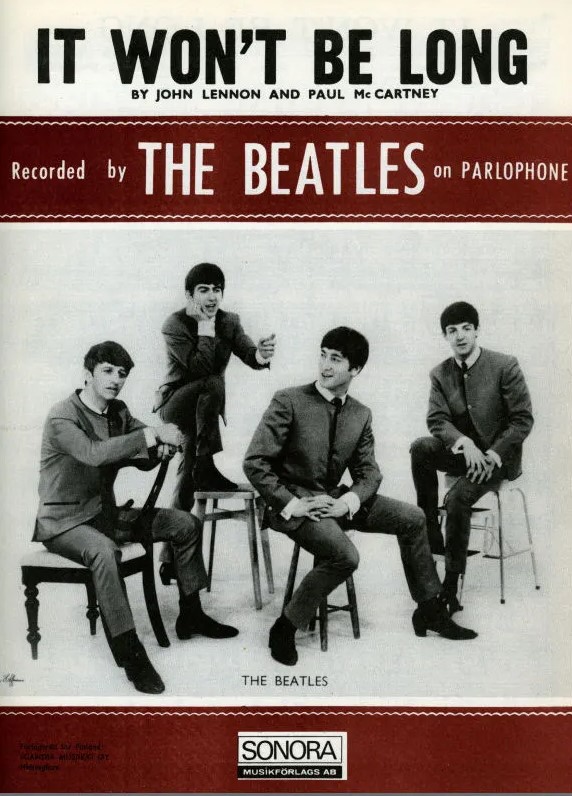 Like "It Won't Be Long" before it, "Tell Me Why" begins with the refrain, which in this case is twelve measures long and emphasizes the title phrase with their trademark vibrant three-part harmony. This refrain is actually made up of two nearly identical five-measure melodic phrases that are thus repeated. After each melodic phrase we hear a one-measure repeat of the introduction, which brings the measure count to the full twelve. Like "It Won't Be Long" before it, "Tell Me Why" begins with the refrain, which in this case is twelve measures long and emphasizes the title phrase with their trademark vibrant three-part harmony. This refrain is actually made up of two nearly identical five-measure melodic phrases that are thus repeated. After each melodic phrase we hear a one-measure repeat of the introduction, which brings the measure count to the full twelve.
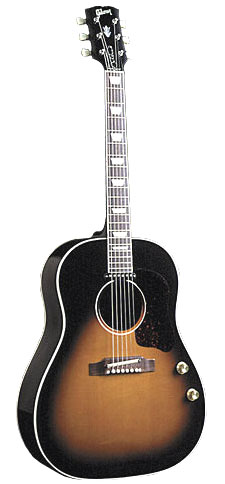 While the song is firmly grounded in a 'swing-style' regarding beat and melodic phrases, we see the bluesy vocal style appear in the eight-measure verse that next occurs. Lennon relates his story personally in the first and third lines of the verse, while Paul and George harmonize the second and fourth lines with him as if to add weight to the personal argument that John is waging with his girl. While the song is firmly grounded in a 'swing-style' regarding beat and melodic phrases, we see the bluesy vocal style appear in the eight-measure verse that next occurs. Lennon relates his story personally in the first and third lines of the verse, while Paul and George harmonize the second and fourth lines with him as if to add weight to the personal argument that John is waging with his girl.
This segues directly back into a repeat of the refrain, which sets the pattern to be followed afterward in a quite predictable, yet effective, manner. As we enter the third refrain, we see that they forgo the final introductory syncopated phrase in order to play a transitory chord that leads into the first and only occurrence of a bridge.
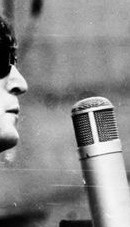 This ten-measure bridge is sung mostly by Lennon solo except for the third of the four lyrical phrases ("is there anything I can do"), which is sung by all three vocalists in a 'self-mocking' falsetto. Then, in an effort to break the monotony, they once again forgo the introductory syncopated phrase for a full measure of triplets from Ringo, which is used as a segue into a final refrain. This ten-measure bridge is sung mostly by Lennon solo except for the third of the four lyrical phrases ("is there anything I can do"), which is sung by all three vocalists in a 'self-mocking' falsetto. Then, in an effort to break the monotony, they once again forgo the introductory syncopated phrase for a full measure of triplets from Ringo, which is used as a segue into a final refrain.
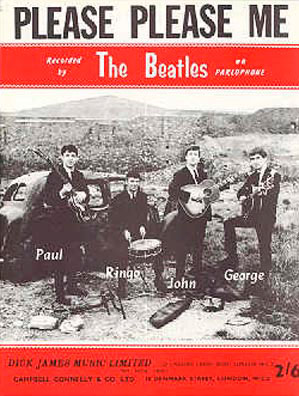 The final refrain is identical to the others except that it is extended to fourteen measures for the purpose of creating a satisfying ending for the song. This ending consists of the introductory syncopated phrase repeated three times using chords unheard previously in the song followed by the home chord to create a satisfying resolve to the track. This conclusion has been used to good effect by them before, such as on "It Won't Be Long" as well as "Please Please Me." The final refrain is identical to the others except that it is extended to fourteen measures for the purpose of creating a satisfying ending for the song. This ending consists of the introductory syncopated phrase repeated three times using chords unheard previously in the song followed by the home chord to create a satisfying resolve to the track. This conclusion has been used to good effect by them before, such as on "It Won't Be Long" as well as "Please Please Me."
"I think a lot of these songs like 'Tell Me Why' may have been based in real experiences," McCartney explains, "or arguments with Cynthia or whatever, but it never occurred to us until later to put that slant on it all."
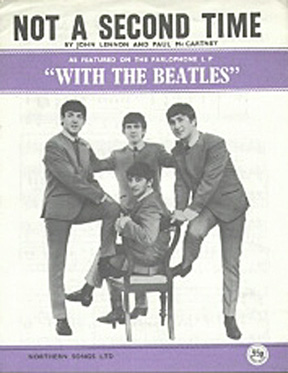 Although Lennon never suggested as much in regard to "Tell Me Why," when examining its lyrics, one can easily see how a disagreement with his wife Cynthia could have been an inspiration. Accusing her of lying, as repeated twice in every refrain, fits in well with his self-admitted jealousy at the time, which he had just written about in "You Can't Do That." The subject of crying, which John brings up countless times in his songwriting career ("Not A Second Time," "I'm A Loser," "I'll Cry Instead"), appears here once again as he's "holding back these tears in my eyes." Although Lennon never suggested as much in regard to "Tell Me Why," when examining its lyrics, one can easily see how a disagreement with his wife Cynthia could have been an inspiration. Accusing her of lying, as repeated twice in every refrain, fits in well with his self-admitted jealousy at the time, which he had just written about in "You Can't Do That." The subject of crying, which John brings up countless times in his songwriting career ("Not A Second Time," "I'm A Loser," "I'll Cry Instead"), appears here once again as he's "holding back these tears in my eyes."
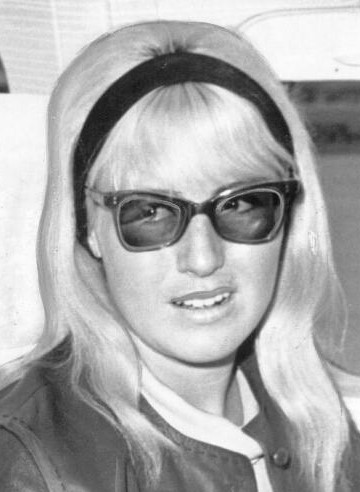 The lyrics "I gave you everything I had" can also be seen to fit the scenario of the time. "Cynthia wanted to settle John down, pipe and slippers," McCartney recalls. "The minute she said that to me I thought, 'Kiss of death.' I know my mate and that is not what he wants. She got a couple of years of that, but he finally had to break loose." The idea of John working hard within The Beatles to give Cynthia the secure life she wanted in their Kenwood mansion and associated lifestyle causing enough resentment to relate in song is easy to accept. The lyrics "I gave you everything I had" can also be seen to fit the scenario of the time. "Cynthia wanted to settle John down, pipe and slippers," McCartney recalls. "The minute she said that to me I thought, 'Kiss of death.' I know my mate and that is not what he wants. She got a couple of years of that, but he finally had to break loose." The idea of John working hard within The Beatles to give Cynthia the secure life she wanted in their Kenwood mansion and associated lifestyle causing enough resentment to relate in song is easy to accept.
 Although the bite of these lyrics are surprisingly contrasted with the happy-go-lucky swing-style of the song as a whole, this biting element is actually a recurrence of a rather similarly dissatisfied relationship subject matter via a happy sounding melody line as heard in "Please Please Me." Happily though, the desperation displayed in "Tell Me Why" is finally revealed in the bridge as the result of his underlying feelings toward her. "Is there anything I can do," John sings, "I'm so in love with you." Although the bite of these lyrics are surprisingly contrasted with the happy-go-lucky swing-style of the song as a whole, this biting element is actually a recurrence of a rather similarly dissatisfied relationship subject matter via a happy sounding melody line as heard in "Please Please Me." Happily though, the desperation displayed in "Tell Me Why" is finally revealed in the bridge as the result of his underlying feelings toward her. "Is there anything I can do," John sings, "I'm so in love with you."
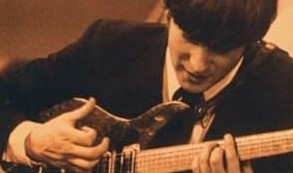 Performance wise, John Lennon stands tall again with his vocals at the top of his register, sometimes on the verge of cracking. Even though the sting of bitterness is evident in his vocals, his performance vocally and on rhythm guitar has the overall effect of an effervescent and fun-loving toe-tapper. Performance wise, John Lennon stands tall again with his vocals at the top of his register, sometimes on the verge of cracking. Even though the sting of bitterness is evident in his vocals, his performance vocally and on rhythm guitar has the overall effect of an effervescent and fun-loving toe-tapper.
 McCartney brings everything he has to the song as he's used to doing, supplying spot-on harmony vocals and smooth, appropriate walking bass lines in the refrains that give the impression that there are more chord changes than there actually are. Harrison's rhythm guitar work is also stellar in that it punctuates the intricate chords of the song while he simultaneously provides a lower harmony vocal part, to create the rich Beatles three-part block harmonies that fans love to hear. McCartney brings everything he has to the song as he's used to doing, supplying spot-on harmony vocals and smooth, appropriate walking bass lines in the refrains that give the impression that there are more chord changes than there actually are. Harrison's rhythm guitar work is also stellar in that it punctuates the intricate chords of the song while he simultaneously provides a lower harmony vocal part, to create the rich Beatles three-part block harmonies that fans love to hear.
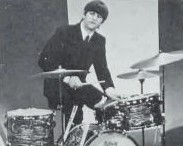 Ringo Starr also rises to the occasion with his triplet-based, tumbling drum fills throughout the song as well as a swing beat that has a booming resonance. For a Beatles' song that had such a short life-span in their career, all four musicians give the performance of a lifetime. Ringo Starr also rises to the occasion with his triplet-based, tumbling drum fills throughout the song as well as a swing beat that has a booming resonance. For a Beatles' song that had such a short life-span in their career, all four musicians give the performance of a lifetime.
 United Artists' Soundtrack Album
|
American Releases
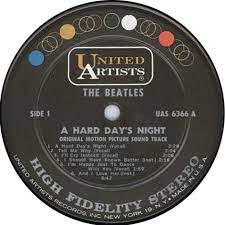 America first got to hear "Tell Me Why" on the popular United Artists "A Hard Day's Night" soundtrack album, released on June 26th, 1964. This highly anticipated album, which sold over a million copies in the first four days of its release, rushed to #1 on the American Billboard album chart and stayed there for an amazing 14 weeks. Since United Artists only had the mono mixes to work with that they received around June 10th, 1964, and as the label was anxious to release the album as soon as possible, they delivered some creative "fakery" when creating the "High Fidelity Stereo" mix for the stereo editions of this album. After transferring this mono master to two separate channels, they boosted the bass frequencies to the left channel and raised the treble frequencies to the right channel, John's solo vocals in the verses being raised to a higher volume in the left channel, while the response vocals are panned higher in the right channel when they appear. This creates a stereo-like "call and response" effect, as well as a raising of the volume in the right channel during the song's conclusion. America first got to hear "Tell Me Why" on the popular United Artists "A Hard Day's Night" soundtrack album, released on June 26th, 1964. This highly anticipated album, which sold over a million copies in the first four days of its release, rushed to #1 on the American Billboard album chart and stayed there for an amazing 14 weeks. Since United Artists only had the mono mixes to work with that they received around June 10th, 1964, and as the label was anxious to release the album as soon as possible, they delivered some creative "fakery" when creating the "High Fidelity Stereo" mix for the stereo editions of this album. After transferring this mono master to two separate channels, they boosted the bass frequencies to the left channel and raised the treble frequencies to the right channel, John's solo vocals in the verses being raised to a higher volume in the left channel, while the response vocals are panned higher in the right channel when they appear. This creates a stereo-like "call and response" effect, as well as a raising of the volume in the right channel during the song's conclusion.
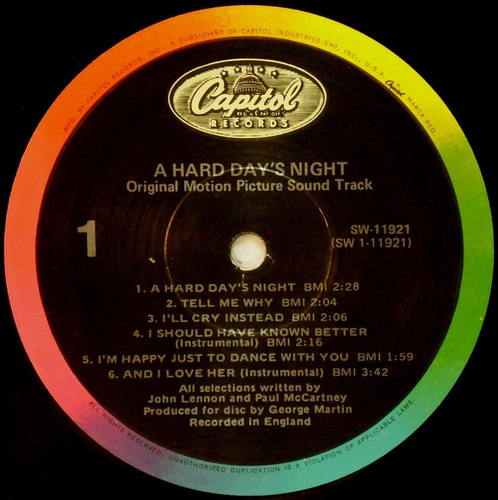 United Artists kept this LP in print until the label was later acquired by Capitol in 1978, Capitol beginning their reprints of this soundtrack album on August 1st, 1980. The album got its CD release on January 21st, 2014, the mono and stereo versions of the original LP both being contained on a single compact disc. United Artists kept this LP in print until the label was later acquired by Capitol in 1978, Capitol beginning their reprints of this soundtrack album on August 1st, 1980. The album got its CD release on January 21st, 2014, the mono and stereo versions of the original LP both being contained on a single compact disc.
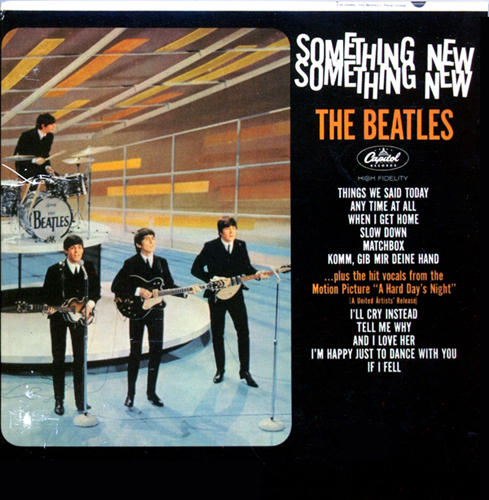 Capitol got to take advantage of the film's popularity as well by releasing their album "Something New" on July 20th, 1964. The song "Tell Me Why" was contained on this album which, while it could only manage a #2 showing on the Billboard album chart, went on to sell over two million copies. This album was also released on an individual CD on January 21st, 2014, the mono and stereo versions both being contained on one compact disc. Capitol got to take advantage of the film's popularity as well by releasing their album "Something New" on July 20th, 1964. The song "Tell Me Why" was contained on this album which, while it could only manage a #2 showing on the Billboard album chart, went on to sell over two million copies. This album was also released on an individual CD on January 21st, 2014, the mono and stereo versions both being contained on one compact disc.
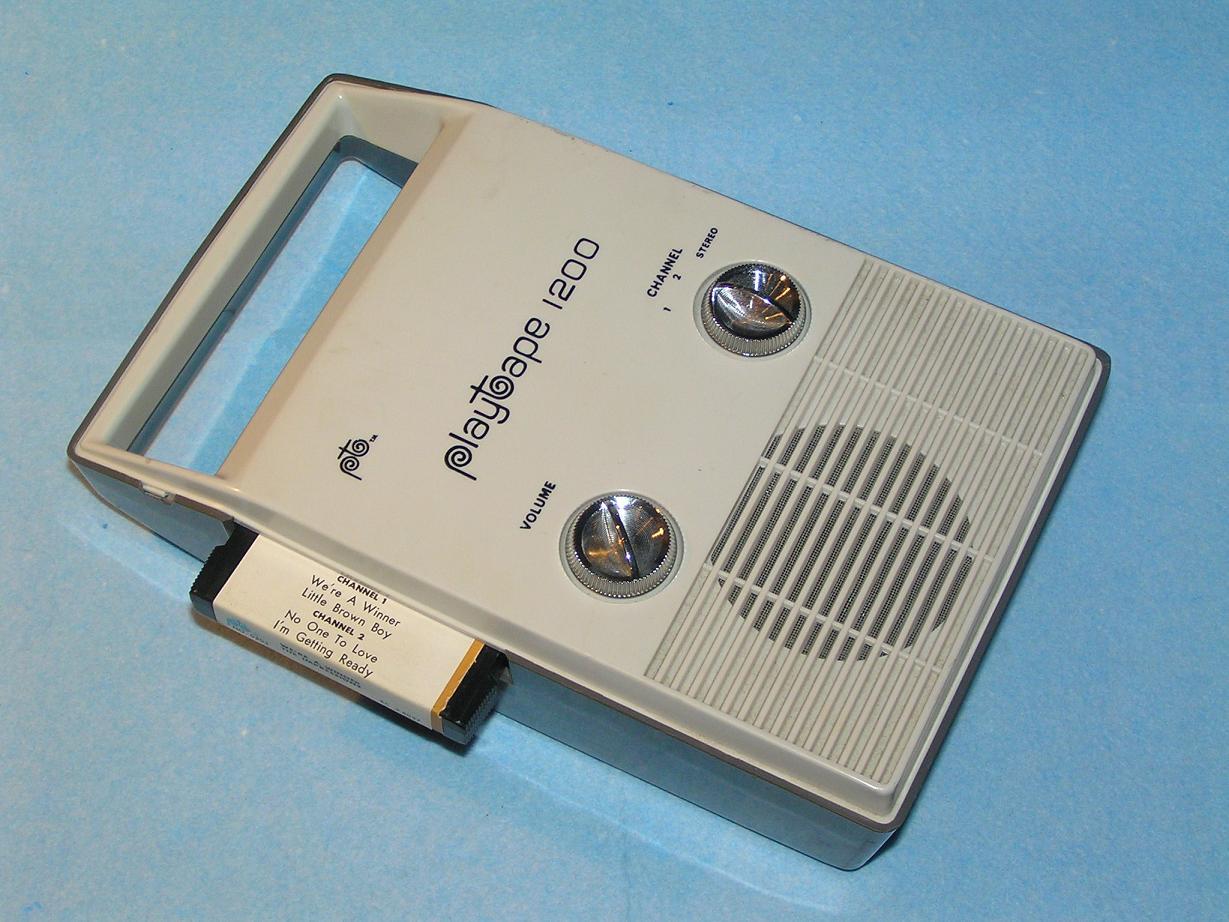 Sometime in 1967, Capitol released Beatles music on a brand new but short-lived format called "Playtapes." These tape cartridges could not contain entire albums, so a four-song rendition of "Something New" came out in this portable format, "Tell Me Why" being one of these songs. Around the same time, United Artists Records released an eight-song "Playtape" version of the soundtrack to "A Hard Day's Night" which also included "Tell Me Why." These "Playtapes" are highly collectable today. Sometime in 1967, Capitol released Beatles music on a brand new but short-lived format called "Playtapes." These tape cartridges could not contain entire albums, so a four-song rendition of "Something New" came out in this portable format, "Tell Me Why" being one of these songs. Around the same time, United Artists Records released an eight-song "Playtape" version of the soundtrack to "A Hard Day's Night" which also included "Tell Me Why." These "Playtapes" are highly collectable today.
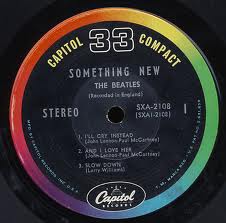
In October of 1964, Capitol issued its third edition of the Compact 33 jukebox discs, this one featuring the album "Something New." "Tell Me Why" appears as the second song on side two.
The first time the original UK "A Hard Day's Night" LP was made available in America was the "Original Master Recording" vinyl edition that was released through Mobile Fidelity Sound Lab in February of 1987. This LP included "Tell Me Why" and was prepared utilizing half-speed mastering technology from the original master tape on loan from EMI. This version of the album was only available for a short time and is quite collectible today.
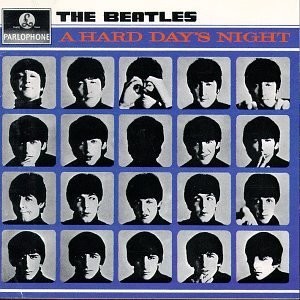 On February 26, 1987 the UK version of the “A Hard Day’s Night” album saw its first American release on CD, the vinyl edition coming out on July 21st, 1987. This included the mono mix of the song, while the remastered version released on September 9th, 2009 on CD contained the stereo mix, the vinyl edition coming out on November 13th, 2012. On February 26, 1987 the UK version of the “A Hard Day’s Night” album saw its first American release on CD, the vinyl edition coming out on July 21st, 1987. This included the mono mix of the song, while the remastered version released on September 9th, 2009 on CD contained the stereo mix, the vinyl edition coming out on November 13th, 2012.
On June 30th, 1992, Capitol released a box set entitled “Compact Disc EP Collection,” which contained the mono mix of “Tell Me Why” because of its inclusion on the original British EP “Extracts From The Film A Hard Day’s Night.”
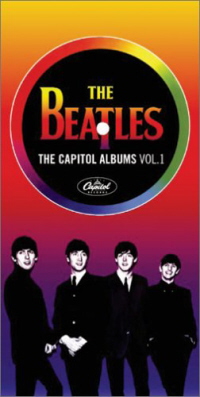 The box set “The Capitol Albums, Volume 1” was released on November 16th, 2004. This box set contains both the stereo and mono mixes as featured on the original “Something New” vinyl albums of 1964. The box set “The Capitol Albums, Volume 1” was released on November 16th, 2004. This box set contains both the stereo and mono mixes as featured on the original “Something New” vinyl albums of 1964.
The 1964 mono mix of “Tell Me Why” was also remastered and was then contained in the box set “The Beatles In Mono,” which was released on CD on September 9th, 2009 and on vinyl on September 9th, 2014.
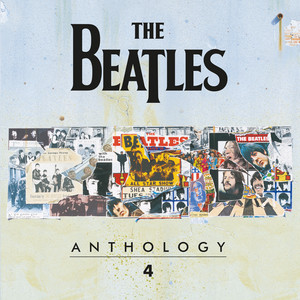 On November 21st, 2025, "Anthology 4" was released on both CD and vinyl, this also being made available within the "Anthology Collection" box set on CD and on vinyl. "Take four" and "take five" of "Tell Me Why" as recorded at EMI Studio Two on February 27th, 1964, as detailed above, was included on this release. On November 21st, 2025, "Anthology 4" was released on both CD and vinyl, this also being made available within the "Anthology Collection" box set on CD and on vinyl. "Take four" and "take five" of "Tell Me Why" as recorded at EMI Studio Two on February 27th, 1964, as detailed above, was included on this release.
Live Performances
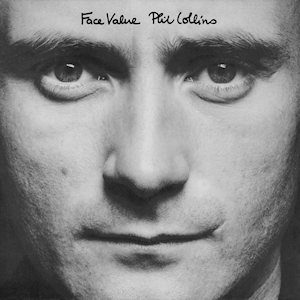 On March 31st, 1964 The Beatles filmed a segment of their movie at the Scala Theatre in London where they simulated a live TV concert. They mimed at least five songs including "Tell Me Why" before an audience of 350 paid actors, which included 13-year-old future Genesis drummer and solo artists Phil Collins. On March 31st, 1964 The Beatles filmed a segment of their movie at the Scala Theatre in London where they simulated a live TV concert. They mimed at least five songs including "Tell Me Why" before an audience of 350 paid actors, which included 13-year-old future Genesis drummer and solo artists Phil Collins.
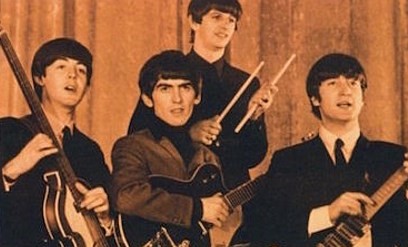 Although this energetic show-stopping song has all of the characteristics of Beatlemania and would have been a natural for live performances on stage, TV and for BBC radio, this lip-synced performance for their movie "A Hard Day's Night" was the only time "Tell Me Why" was ever played before an audience. One must ask: Tell me why? Although this energetic show-stopping song has all of the characteristics of Beatlemania and would have been a natural for live performances on stage, TV and for BBC radio, this lip-synced performance for their movie "A Hard Day's Night" was the only time "Tell Me Why" was ever played before an audience. One must ask: Tell me why?
Conclusion
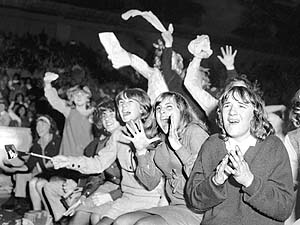 The output from the Lennon/McCartney partnership was astonishing. They knew that their loyal fans were highly anticipating every track on every album, so they didn't skimp as songwriters, even on songs that they viewed as fillers, or "work songs." "Tell Me Why," for example, only had the exposure on an album or two and was featured in their movie "A Hard Day's Night," but otherwise was not intended as a single (although it was released as such in some countries) and was neglected by the group in live performances. And still, many decades later, the song holds up and is held in high esteem by Beatles fans around the world. Such is the phenomenon of The Beatles. The output from the Lennon/McCartney partnership was astonishing. They knew that their loyal fans were highly anticipating every track on every album, so they didn't skimp as songwriters, even on songs that they viewed as fillers, or "work songs." "Tell Me Why," for example, only had the exposure on an album or two and was featured in their movie "A Hard Day's Night," but otherwise was not intended as a single (although it was released as such in some countries) and was neglected by the group in live performances. And still, many decades later, the song holds up and is held in high esteem by Beatles fans around the world. Such is the phenomenon of The Beatles.
Song Summary
"Tell Me Why"
Written by: John Lennon / Paul McCartney
-
Song Written: February 1964
-
Song Recorded: February 27, 1964
-
First US Release Date: June 26, 1964
-
-
US Single Release: Capitol #SXA-2108 "Something New" Compact 33 jukebox disc
-
Highest Chart Position: n/a
-
-
Length: 2:10
-
Key: D major
-
Producer: George Martin
-
Engineers: Norman Smith, Richard Langham
Instrumentation (most likely):
-
John Lennon - Lead Vocals, Rhythm Guitar (1962 Gibson J160E)
-
Paul McCartney - Bass Guitar (1963 Hofner 500/1), Harmony Vocals
-
George Harrison - Lead Guitar (1963 Gretsch 6122 Country Gentleman), Harmony Vocals
- Ringo Starr - Drums (1963 Ludwig Downbeat Black Oyster Pearl)
- George Martin - Piano (1905 Steinway Vertegrand upright)
Written and compiled by Dave Rybaczewski
|
IF YOU WOULD LIKE TO MAKE A DONATION TO KEEP THIS WEBSITE UP AND RUNNING, PLEASE CLICK BELOW!
Sign Up Below for our MONTHLY BEATLES TRIVIA QUIZ!
|